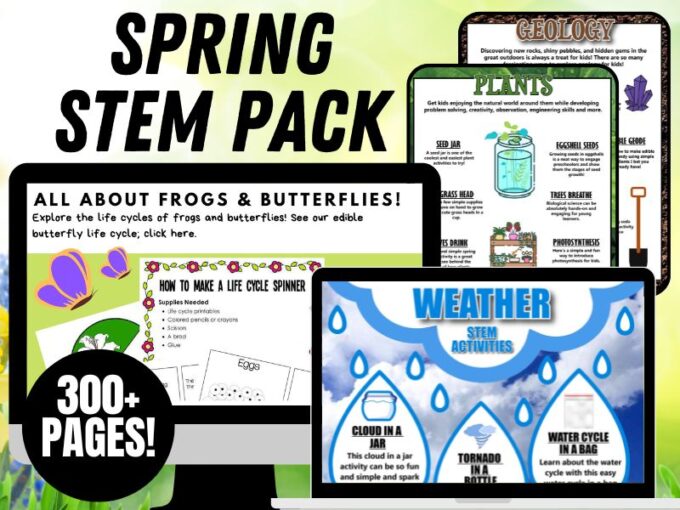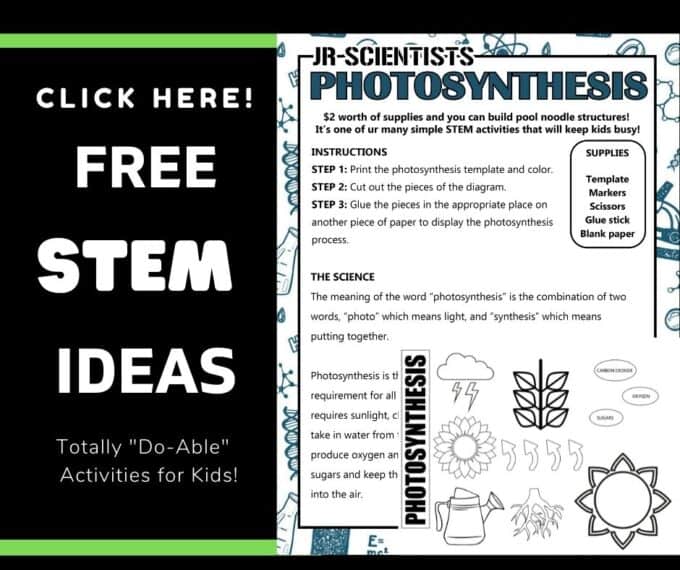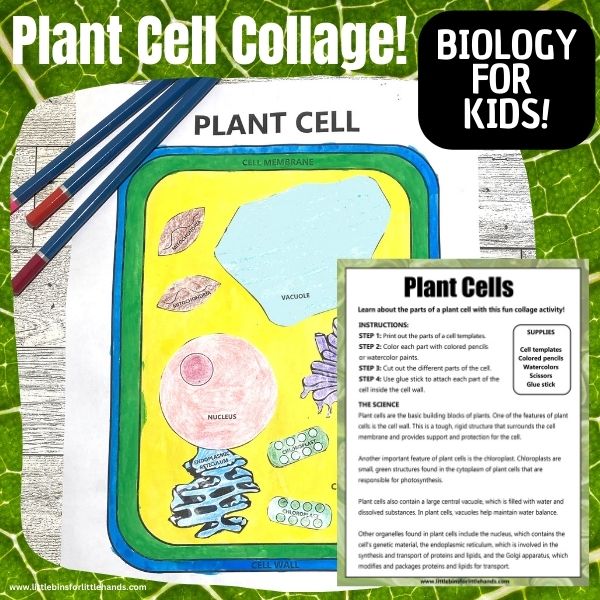All living organisms need energy to live on earth. People get energy by eating food. But how do plants get their food? Green plants make their own food and food for us through the process of photosynthesis. Here’s a simple and fun way to introduce photosynthesis for kids. Check out more plant experiments for kids!
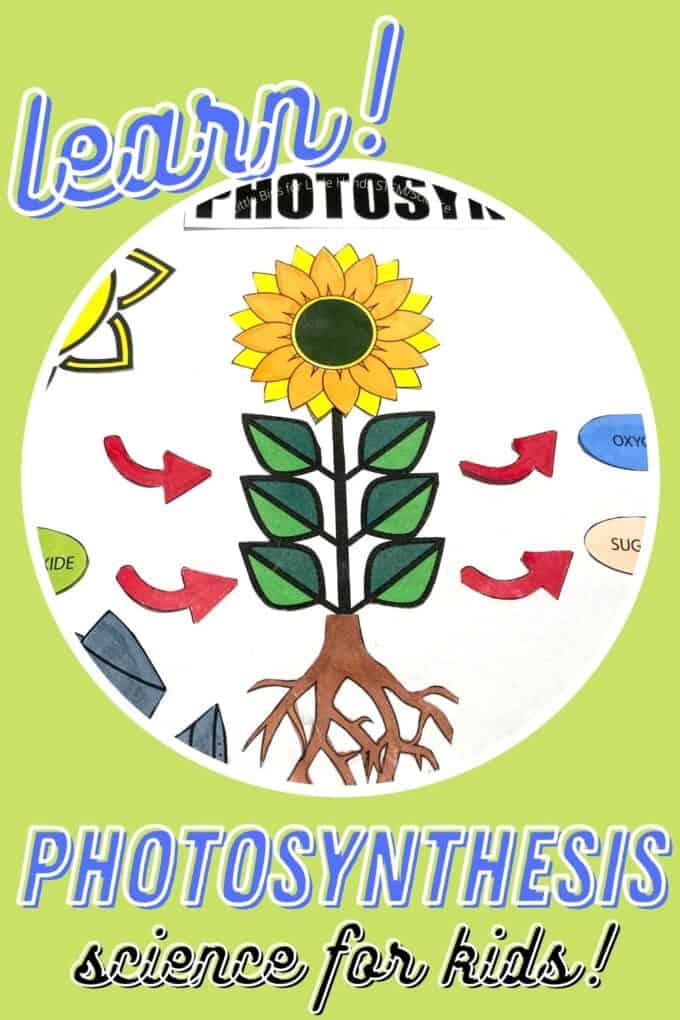
What is Photosynthesis?
The meaning of the word “photosynthesis” is the combination of two words, “photo” which means light, and “synthesis” which means putting together.
Photosynthesis is the process plants use to make their own food. There are four main things plants need for photosynthesis to take place, sunlight, chlorophyll, water, and carbon dioxide gas. Plants get water from the soil when it rains and carbon dioxide from the air.
What does photosynthesis produce? Photosynthesis results in oxygen and glucose (sugar). The oxygen is released into the air. The plant uses some of the glucose and the rest is stored.
Where does photosynthesis happen? The process of photosynthesis occurs in the leaves of plants, specifically in organelles called chloroplasts. This is where light energy is able to be converted into chemical energy, and is an example of a chemical change.
Chlorophyll are green pigments that give plants their green color. You will find chlorophyll in the chloroplasts and they help plants absorb the energy from the sun.
Photosynthesis Process Step By Step
Photosynthesis occurs in two stages: a light-dependent stage during the day and a non-light-dependent stage that can occur at any time.
Light-dependent photosynthesis reactions occur in the chloroplasts, where chlorophyll and oxygen absorb the light produced.
The Calvin Cycle’s second stage occurs in the leaves’ stoma. It uses energy from the previous reactions to make glucose from CO2.
Photosynthesis is a great example of a chemical reaction or change because new products, glucose and oxygen, are formed.
Why is Photosynthesis Important?
Without the process of photosynthesis, very few organisms could live on earth. Plants use the carbon dioxide that is a by-product of respiration and in turn release oxygen into the atmosphere for us to breath.
Photosynthesis also turns light energy into chemical energy, which provides food for us. Find out the important role plants have as producers in food chains. Photosynthesis is important for all life on earth!
Learn more about how photosynthesis is an important part of the carbon cycle.
Photosynthesis Worksheet Activity
SUPPLIES:
- Photosynthesis Worksheet
- Markers
- Scissors
- Glue stick
- Blank paper
INSTRUCTIONS:
STEP 1: Print out the photosynthesis worksheet and color it in.



STEP 2: Cut out the pieces of the diagram.
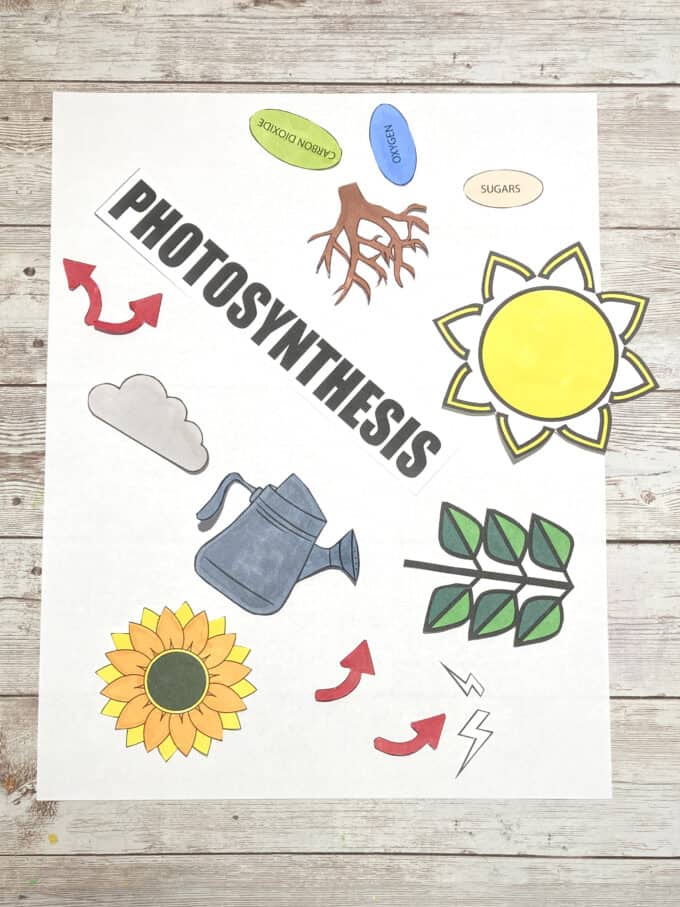
STEP 3: Glue the pieces in the appropriate place on another piece of paper to display the photosynthesis process.
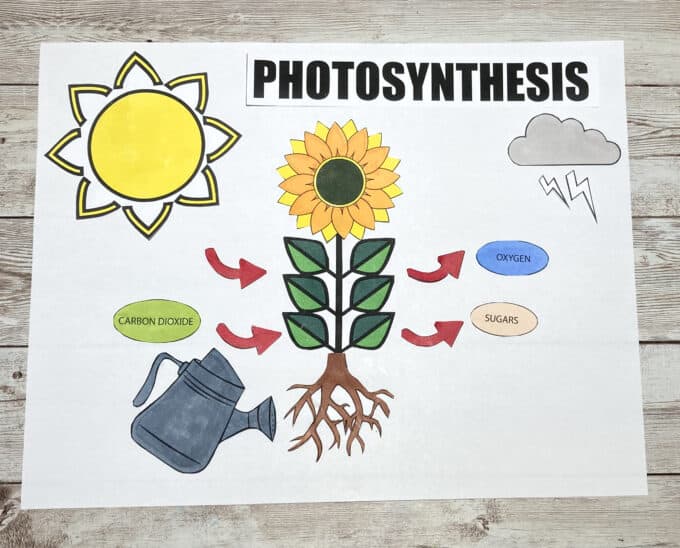
Learn About Plant Cells
If you want to continue your exploration of plants and biology on a more in-depth level, look at this plant cell STEAM project. We also have a similar animal cell STEAM activity and a printable project pack for both!
More Plant Activities For Kids
Looking for more plant lesson plans? Here are few suggestions for fun plant activities that would be perfect for preschoolers and elementary kids.
Grab some leaves and find out how plants breath with this simple activity.
Set up a flower dissection lab!
Learn about how water moves through the veins in a leaf.
Find out why leaves change color with our printable lapbook project.
Explore the carbon cycle and the nitrogen cycle.
Watching flowers grow is an amazing science lesson for kids of all ages. Find out what are easy flowers to grow!
See up close how a seed grows and what would actually be happening under the ground with a seed germination jar.
Use this seed bomb recipe and make them as a gift or even for Earth Day.
Learn about osmosis when you try this fun potato osmosis experiment with the kids.
Explore the different plants that you find in our biomes of the world lapbook project.
Printable Spring Pack
If you’re looking to grab all of the printables in one convenient place plus exclusives with a spring theme, our 300+ page Spring STEM Project Pack is what you need!
Weather, geology, plants, life cycles, and more!
